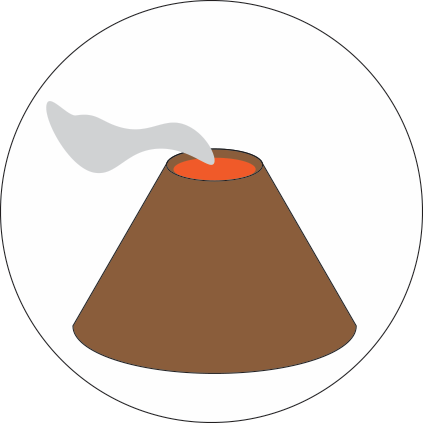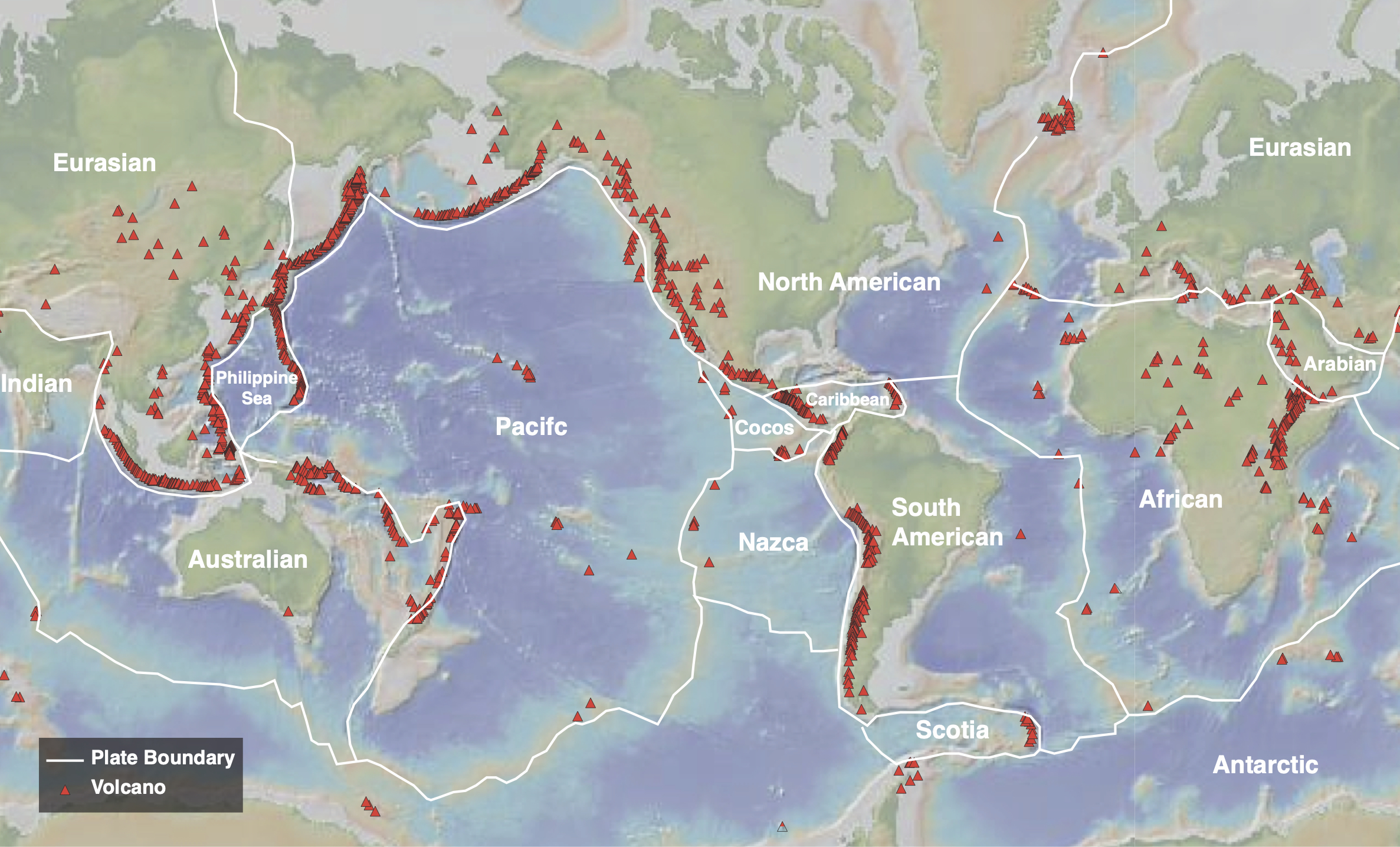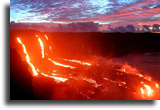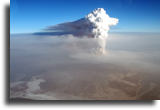

The majority of volcanism on Earth occurs along linear belts defined by large-scale plate boundaries (white lines on the map here).

Submarine volcanism occurs dominantly along plate boundaries where the plates are moving apart, such as at mid-ocean ridges. Subaerial volcanism (red triangles) occurs mostly where plates are coming together and one plate descends beneath the other in a process called subduction. A third type of volcanism occurs within the ocean basins and on continental landmasses. These volcanoes derive their magma from deep-seated sources in the Earth's mantle called hotspots.
The largest amount of volcanism of Earth (75%) occurs along mid-ocean ridges far beneath the surface of the ocean and results in the formation of submarine lava flows and the construction of new oceanic crust. Mid-ocean ridge style volcanism is very rarely seen at the surface but, notably, it does occur in Iceland.


In general, volcanism can be subdivided into two different styles: effusive and explosive.
During effusive activity magma is erupted and flows away from the vent as liquid lava that moves across the land surface under the influence of gravity.
In contrast, explosive activity occurs when magma is fragmented into small pieces and expelled very energetically from a vent into the air, as a result of a high gas content in the magma.